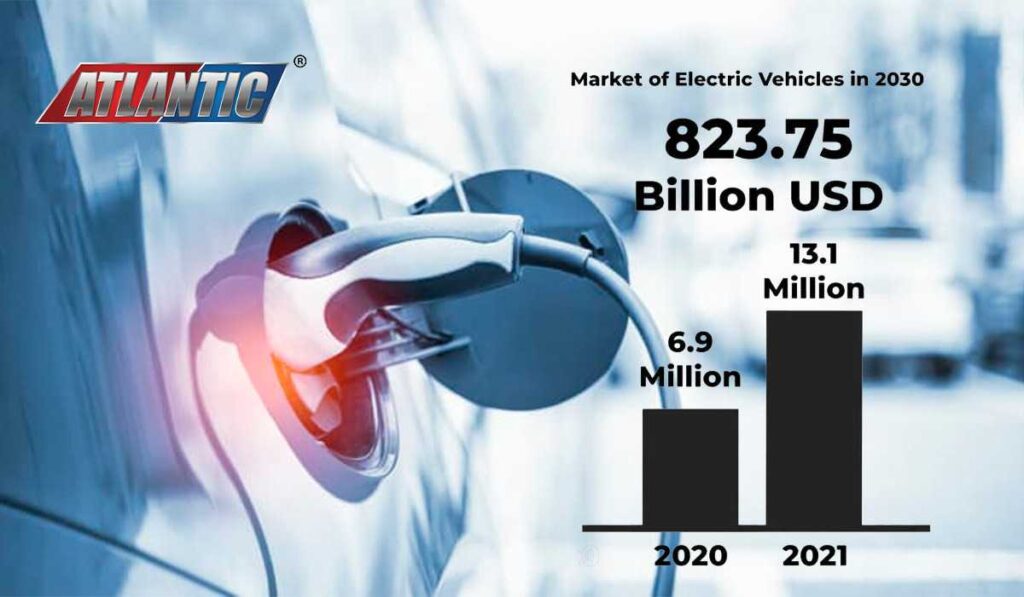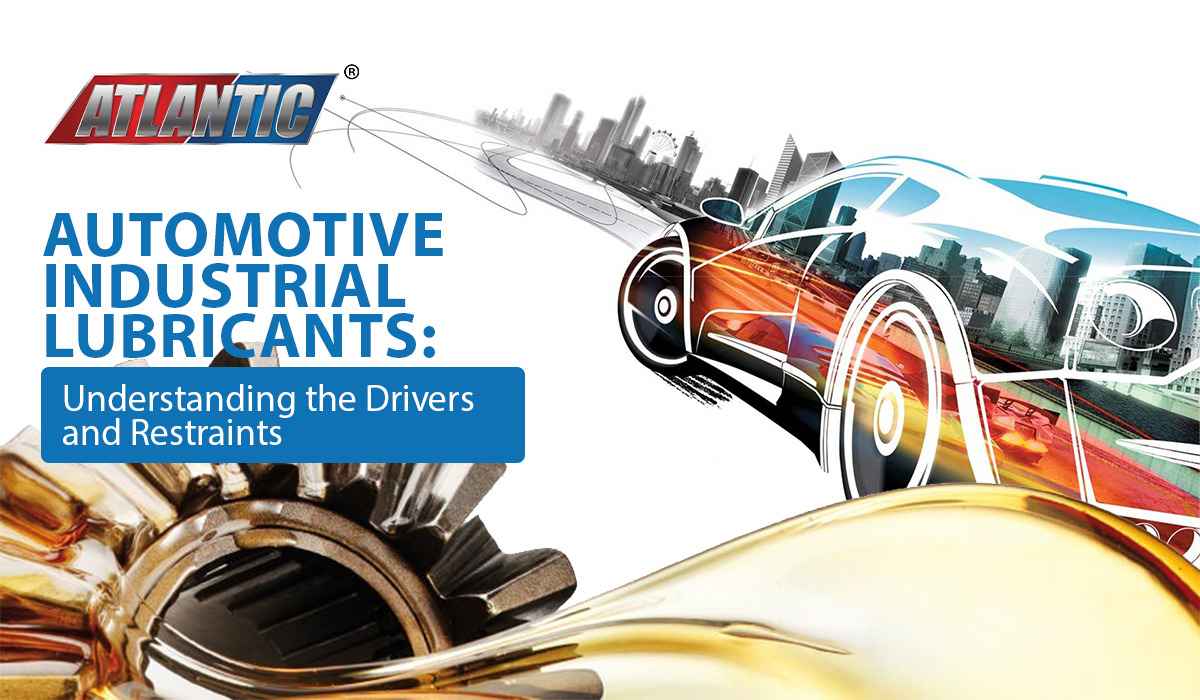In the fast-paced world of the automotive industry, lubricants play a vital role in ensuring vehicles’ smooth functioning and longevity. But as the folks, oils are not just for automobiles; they are for the smooth manufacturing process of cars.
Automotive and industrial lubricants, specifically designed for heavy-duty machinery manufacturing, are formulated to meet the unique requirements of machines, their transmissions, and other critical components.
Industrial lubricants are subjected to a multitude of challenges. They must withstand extreme temperatures, sustain continuous operation, and enable compressors, pumps, motors, and other equipment to perform their crucial functions.
Well-formulated lubricants significantly reduce friction, enhance productivity, and extend the lifespan of valuable industrial machinery. As the industrial lubricant market progresses, certain materials are emerging as game-changers. These innovative substances are revolutionizing the industry, which begs the question: What does the future hold for chemical science in industrial lubricants?
Drivers Of Automotive Industrial Lubricants

Increasing Adoption Of High- Performance Lubricants
The automotive industry has seen a drastic change and growing demand for high-performance lubricants due to their ability to enhance performance, reduce emissions, and extend equipment life.
These advanced lubricants, with their high-quality thermal stability, oxidation, rust resistance, and wear protection properties, are increasingly preferred by automotive manufacturers and vehicle owners alike. High-performance lubricants are driving the market forward by optimizing performance and reducing maintenance costs.
They make sure that optimal performance reduces friction-related concerns and contributes to improving productivity.
Other Drivers
Beyond high-performance lubricants, other effects influence the growth of automotive, industrial lubricants. Technological advancements, such as the development of synthetic lubricants and bio-based alternatives, are expanding the range of available options. Additionally, the increasing number of vehicles and their outnumbered demands on the road, particularly in emerging economies, is creating a steady demand for industries to speed up their manufacturing.
Additionally, the rise of awareness regarding maintenance, the long life of machinery, and the benefits of using quality industrial lubricants are in demand in the market.
Restraints
Extended Drain Intervals:
Extended drain intervals refer to the length of time between oil changes in vehicles and machines in a row. While advancements in lubricant technology have allowed for longer drain intervals, it poses challenges for lubricant manufacturers to cater to the demand of the multiple automotive industries.
One of the challenges the automotive lubricants industry faces is the trend toward extended drain intervals. Increased lubricant formulations and enhanced engine technologies have led to longer oil change intervals, reducing the frequency of lubricant purchases. While these benefits vehicle owners in terms of cost savings and convenience, they restrain lubricant manufacturers who must adapt to this changing landscape.
Uncertain Impact Of Electrical Vehicles In The Future

The rise of electric vehicle demand presents a potential restraint in the future for automobile lubricants. But with it, it would also have an effect on the industry. Unlike traditional internal combustion engines, EVs have fewer moving parts. A battery powers some, and some use electric motors for moving on roads. EVs don’t have pistons, valves, or other moving parts that traditional vehicles require lubrication.
As suggested by the International Energy Agency, IEA, the transportation industry consumes about 60% of the world’s oil demand. The trend of electric vehicles has posed a threat to reducing this demand. BloombergNEF estimates that electric vehicles significantly reduce 1.5 million barrels of oil demand daily, a major throwback. If this continues, the demand will be reduced by around 2.5 million barrels of oil daily demand by 2025.
However, it is important to note that EVs still rely on lubricants for certain components like transmissions and bearings, offering opportunities for specialized lubricant formulations.
Industry Value Chain Analysis

The car lubricant grease encompasses a complex value chain involving multiple shareholders such as raw material suppliers, lubricant manufacturers, lubricant additive distributors, and end-users. Each value chain stage contributes to lubricant products’ overall quality, availability, and affordability. Collaboration and efficient coordination among these stakeholders is essential to ensure a seamless supply chain and meet the market’s evolving needs.
Raw Material Suppliers
These suppliers provide base oils, additives, and other key ingredients required for lubricant formulations.
Lubricant Manufacturers
Manufacturers blend and formulate lubricants according to the Original Equipment Manufacturer’s demand. They ensure the final product industry standards and performance requirements.
Distributors
Suppliers play a crucial role in the supply chain by distributing lubricants to dealers, automotive service centers, and other end users.
Retailers And Service Centers
These people sell lubricants to end users, including individual vehicle owners, fleet operators, and industrial customers.
End Users
The last comes to the end users. End users involve a wide range of entities, from individual vehicle owners to industrial machinery operatives. They depend on lubricants to maintain the performance and longevity of their tools.
Regulatory Policy Analysis
- API (American Petroleum Institute) standards for engine oils
- ACEA (European Automobile Manufacturers’ Association) specifications for lubricants
- Environmental regulations regarding emissions and disposal of used lubricants
- Labeling and safety requirements
What Are The Different Benefits Of Using Automotive Industrial Lubricants?
High-performance automotive, industrial lubricants offer several benefits, including:
- Enhanced engine protection: High-performance lubricants help to keep your engine safe from wear and tear, which can lead to costly repairs.
- Improved fuel efficiency: High-performance lubricants can help enhance your car’s fuel effectiveness, saving you money at the pump.
- Reduced wear on engine components: High-performance lubricants can help to reduce wear on your engine’s features, which can extend the life of your machine.
What Are The Factors That Lead To Changes In Automotive Lubricants?
The regularity of oil changes rests on several factors, such as the type of vehicle, driving conditions, and the specific lubricant used. Following the manufacturer’s guidelines in the vehicle owner’s manual is recommended. Regular oil analysis can also provide insights into the condition of the grease & lubricants to help determine the ideal change interval. Here are some additional tips for changing your automotive lubricants:
- Use the correct type and amount of oil for your vehicle.
- Change your oil more regularly in dusty or stop-and-go conditions.
- Check your oil regularly and add oil as needed.
- Dispose of used oil and filters properly.
Can I mix different brands of lubricants?
While mixing different brands of lubricants is generally not recommended, ensuring compatibility between the base oils and additives is essential. Mixing incompatible lubricants can lead to reduced performance and potential damage to engine components. It is advisable to consult the manufacturer’s recommendations or seek professional advice when mixing lubricants.
How do electric vehicles impact the demand for automotive lubricants?
Electric vehicles (EVs) have a small impact on the demand for automotive lubricants compared to old-fashioned combustion engine vehicles. Although EVs do not need lubrication for their electric motors, oils, and greases are still necessary for other components, such as bearings and gears.
What Is The Future Position For The Automotive Lubricants Industry?
The future outlook for the automotive lubricant industry is dynamic and subjective to various factors. The industry is projected to witness steadily driven by increasing vehicle sales, advanced lubricant trends, and technology with evolving regulations.
How can you choose suitable automotive lubricants for your vehicle?
Choosing suitable automotive lubricants involves considering the vehicle manufacturer’s recommendations, the specific application, and the desired performance characteristics. It is advisable to refer to the vehicle owner’s manual or consult with a knowledgeable professional to select lubricants that meet the necessary specifications and requirements for optimal performance and protection.

